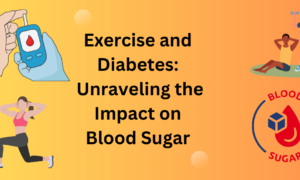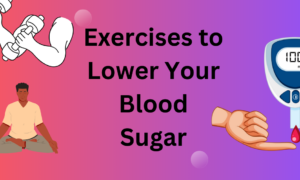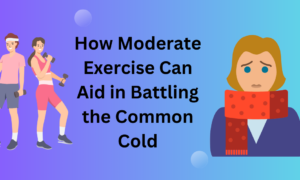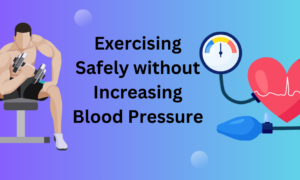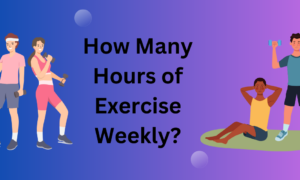Every fitness journey revolves around two key elements—training and recovery. While most people dedicate time and effort to lifting, running, or performing high-intensity workouts, fewer pay equal attention to rest. Yet, this is where real transformation happens. Muscles rebuild, energy systems recharge, and the body adapts to the stresses placed upon it. Understanding how to tailor recovery for different goals—be it endurance, strength, or aesthetic improvement—is crucial to unlocking consistent progress. Effective workout recovery tips and personalized muscle repair strategies not only prevent injury but also maximize performance. When you master your endurance rest cycles, you set the foundation for long-term success, regardless of your training discipline.
Understanding the Science of Recovery
Recovery is more than just taking a day off. It’s a physiological process that restores balance in the body after stress from exercise. When you work out, your muscle fibers undergo microscopic damage, and inflammation rises temporarily. The repair process that follows is what makes you stronger and more resilient. Applying the right muscle repair strategies ensures that this recovery phase leads to adaptation rather than burnout.
Similarly, endurance rest cycles help maintain cardiovascular efficiency while preventing fatigue from accumulating. One of the most overlooked workout recovery tips is recognizing that rest doesn’t mean inactivity—it’s an active phase where nutrition, sleep, and hydration play major roles. By understanding the biology behind recovery, you can better control your progress instead of leaving it to chance.
Why Recovery Differs by Fitness Goal
The recovery needs of a long-distance runner are not the same as those of a powerlifter or physique athlete. The type, duration, and intensity of workouts determine how your body heals and adapts. For strength training, muscle repair strategies focus on rebuilding tissue and replenishing glycogen. In contrast, endurance athletes rely on optimized endurance rest cycles that prevent overuse injuries while maintaining stamina.
Those training for aesthetics, like bodybuilders or fitness enthusiasts, require precise workout recovery tips that balance rest with consistent muscle stimulation. Recovery should match the stress applied—too little rest can lead to fatigue, while too much can slow progress. Recognizing these nuances allows athletes and everyday gym-goers to recover smarter, ensuring that their rest supports their specific goals instead of hindering them.
The Role of Sleep in Recovery and Performance
Sleep is the most powerful recovery tool available, yet it’s often neglected. During deep sleep, the body releases growth hormone, which plays a vital role in tissue repair and muscle development. Poor sleep disrupts this process, leading to slower recovery, mood fluctuations, and decreased motivation. Effective workout recovery tips always emphasize the value of quality sleep over quantity. For strength training, deeper sleep stages facilitate muscle repair strategies that restore damaged fibers and replenish energy stores.
Endurance athletes, meanwhile, depend on sufficient sleep to regulate hormones that influence metabolism and stress response, supporting efficient endurance rest cycles. Prioritizing sleep hygiene—consistent bedtimes, limited screen exposure, and relaxation routines—can drastically improve recovery efficiency. Without proper rest, even the most structured training plan will fail to deliver lasting results.
Nutrition as a Foundation for Repair
Recovery isn’t just what happens after exercise—it’s what you feed your body during that time. Nutrients are the raw materials the body uses for repair, and their balance determines how well you recover. Protein intake is central to all muscle repair strategies, as amino acids rebuild fibers damaged during training. Carbohydrates restore glycogen, providing the energy needed for both endurance and strength recovery. Healthy fats regulate hormones that influence healing and inflammation control.
Hydration also matters, as water supports nutrient transport and waste removal. Effective workout recovery tips encourage planning meals around post-workout windows to maximize nutrient absorption. For those focusing on endurance rest cycles, electrolytes are equally important to replace what’s lost through sweat. When your nutrition aligns with your training goals, recovery becomes more efficient, and performance naturally follows.
Active Recovery: Moving to Heal
Contrary to popular belief, recovery doesn’t mean complete inactivity. Light exercise—known as active recovery—can accelerate healing by increasing blood flow and oxygen delivery to sore muscles. Activities like yoga, stretching, swimming, or light cycling stimulate the body without overloading it. These movements enhance flexibility, reduce stiffness, and assist in muscle repair strategies by clearing lactic acid buildup. Active recovery days are one of the most practical workout recovery tips for maintaining consistency without overtraining.
Endurance athletes benefit from gentle movement between endurance rest cycles, as it prevents the sharp decline in performance associated with total rest. The goal is to promote circulation and relaxation while allowing muscles to restore glycogen and repair microtears. By incorporating active recovery sessions into your schedule, you give your body the balance it needs between exertion and restoration.
Tailoring Recovery for Endurance Training
Endurance athletes face the unique challenge of balancing volume and recovery. Their training involves repetitive motion and extended strain, which can wear down muscles and joints over time. The key is managing endurance rest cycles that allow the body to rebuild while maintaining aerobic conditioning. Recovery for endurance athletes includes low-intensity cross-training, hydration strategies, and steady fueling with carbohydrates. While strength athletes rely heavily on muscle repair strategies, endurance athletes need to focus equally on tendon health, inflammation control, and cardiovascular balance.
Applying the right workout recovery tips—such as alternating long-distance sessions with shorter technical runs or swims—prevents overuse injuries. By integrating rest intervals strategically, endurance athletes sustain performance levels longer and experience fewer energy crashes, making recovery an essential pillar of long-term training sustainability.
Recovery Principles for Strength Training
Building strength requires tearing down muscle tissue to rebuild it stronger. However, pushing too hard without sufficient rest can backfire. The recovery period between heavy sessions is when true muscle growth occurs. Effective muscle repair strategies involve ensuring adequate protein intake, optimizing sleep, and spacing out high-intensity lifts to allow complete restoration.
A solid workout recovery tip for strength athletes is to rotate muscle groups, giving each sufficient time to heal while maintaining overall training frequency. For example, alternating upper and lower body days or focusing on accessory work can prevent overtraining. Even in endurance rest cycles, strength athletes benefit from light conditioning to improve blood flow and flexibility. Proper rest not only prevents injury but also enhances neuromuscular coordination, helping lifters maintain form and maximize power output in subsequent sessions.
Aesthetic Training: Recovery for Muscle Definition
When training for aesthetics, recovery is as much about balance as it is about growth. The goal is to maintain muscle tone while reducing fatigue and inflammation that can hinder definition. Effective muscle repair strategies involve shorter rest periods between workouts and controlled intensity to prevent catabolic loss. Strategic workout recovery tips—such as contrast showers, massage therapy, and stretching—can help reduce soreness while improving circulation. For those managing endurance rest cycles, light cardio can maintain calorie expenditure without interfering with muscle recovery.
Aesthetic-focused athletes benefit from precision: too much rest can reduce metabolic activity, while too little impairs muscle density. By customizing recovery to sustain lean muscle and avoid fatigue, individuals pursuing aesthetic goals can maintain a sculpted, healthy appearance over time.
Mental Recovery and Stress Management
Physical recovery cannot be separated from mental restoration. High stress elevates cortisol levels, which slows muscle repair strategies and increases fatigue. Effective workout recovery tips emphasize mental downtime—activities like meditation, journaling, or mindful breathing that calm the nervous system. Even within endurance rest cycles, relaxation supports performance by maintaining hormonal balance and focus. Neglecting mental recovery leads to burnout and inconsistent motivation. Incorporating mindfulness into recovery routines strengthens not just the body but also the mindset required for long-term training. Learning when to step back and recharge mentally can make training more sustainable, enjoyable, and productive. A healthy mind enhances a healthy body, turning rest into an essential part of athletic discipline rather than a pause in progress.
Recognizing the Signs of Overtraining
Overtraining occurs when recovery is insufficient relative to workload. Symptoms include chronic soreness, fatigue, irritability, and declining performance. Ignoring these signs can lead to injury or long-term stagnation. Implementing structured endurance rest cycles and applying effective muscle repair strategies prevent this imbalance. Key workout recovery tips include tracking energy levels, monitoring sleep patterns, and scheduling deload weeks to reset the body. Recovery should be proactive, not reactive—addressing strain before it becomes a setback. Listening to your body is the most reliable indicator of recovery needs. When fatigue persists despite rest, it’s a signal to reassess workload and nutrition. Recognizing early warning signs ensures longevity in training, helping athletes perform at their best without compromising their health or goals.

The Role of Technology in Modern Recovery
Technology has revolutionized recovery methods, making it easier to monitor progress and adjust rest accordingly. Wearable devices track sleep quality, heart rate variability, and exertion levels, offering data that supports smarter muscle repair strategies. Apps that analyze performance trends can recommend optimal endurance rest cycles for different workout intensities. Incorporating these insights into your workout recovery tips ensures that recovery is tailored, not generic.
Devices like massage guns, compression sleeves, and cold therapy tools also enhance circulation and reduce soreness. The advantage of technology lies in its precision—it removes guesswork and allows you to see how recovery impacts performance metrics. By combining scientific tools with body awareness, athletes can fine-tune their recovery approach, ensuring that every rest period contributes directly to improved output and resilience.
Recovery as an Ongoing Learning Process
Recovery isn’t a static formula—it evolves as your body, training intensity, and lifestyle change. The best workout recovery tips adapt to your experience level and goals. Beginners might need more complete rest days, while advanced athletes may thrive on active recovery. Likewise, muscle repair strategies shift as your conditioning improves, requiring adjustments in nutrition and sleep. Endurance rest cycles evolve with age, training history, and competition schedule.
Successful recovery demands patience and self-awareness—it’s a constant dialogue between effort and adaptation. Tracking recovery markers like soreness, motivation, and sleep helps identify what works best for you. Ultimately, understanding recovery as a lifelong process rather than a temporary pause turns rest into a skill—one that supports consistency, performance, and overall health.
Balancing Recovery Between Training Phases
Every fitness program cycles through phases—foundation, intensity, peak, and deload—and recovery should evolve alongside them. One of the most valuable workout recovery tips is understanding that rest is not constant; it needs to match training demands. During high-intensity or strength-building phases, recovery should focus on deep muscle repair strategies involving increased sleep, nutrient-dense meals, and low-stress days. In contrast, lighter phases may include shorter endurance rest cycles with active recovery activities to maintain movement without fatigue.
The body responds best when rest is dynamic and intentional rather than routine. Listening to training load feedback—such as soreness duration, heart rate changes, and mood shifts—helps determine when to pull back or push forward. Athletes who synchronize recovery with their training phases perform more consistently, avoid burnout, and build long-term resilience that supports both strength and endurance goals.
Hydration: The Overlooked Element of Effective Recovery
Hydration plays a pivotal role in every stage of recovery but is often underestimated compared to food or supplements. Fluids are essential for nutrient transport, temperature regulation, and toxin removal—all vital parts of effective muscle repair strategies. Losing even a small percentage of body water can delay recovery and increase soreness. Among all workout recovery tips, consistent hydration ranks high because it supports every cellular process involved in repair. For athletes following demanding endurance rest cycles, replacing electrolytes lost through sweat becomes even more critical.
Water alone isn’t enough after prolonged exertion; mineral balance matters too. Sipping fluids regularly rather than chugging them post-workout helps maintain equilibrium. Whether you’re training for a marathon or a powerlifting meet, staying hydrated enhances performance, accelerates tissue healing, and ensures the body’s internal systems function at full capacity throughout the recovery process.
Massage and Mobility Work as Recovery Tools
Massage and mobility training serve as bridges between activity and rest, making them essential for sustainable progress. They stimulate circulation, reduce muscle stiffness, and promote better posture—all contributing to efficient muscle repair strategies. Foam rolling, stretching, and targeted massage release built-up tension that can restrict movement or cause imbalance. Many effective workout recovery tips include dedicating time each week to mobility work to maintain flexibility and joint health. For athletes managing endurance rest cycles, gentle massage can reduce cumulative fatigue from repetitive movement patterns.
These techniques not only feel restorative but also prepare the body for the next session by improving tissue elasticity and alignment. Over time, integrating massage and mobility exercises into your routine minimizes injury risk, speeds recovery between workouts, and promotes a sense of physical and mental balance that supports continuous progress.
The Mind-Body Connection in Recovery Success
Recovery extends beyond muscles—it involves the nervous system and emotional state. Stress, whether physical or psychological, affects how the body heals and adapts. This is why mindfulness, relaxation, and gratitude are increasingly included in workout recovery tips for holistic wellness. High stress elevates cortisol, which interferes with muscle repair strategies by prolonging inflammation and slowing tissue regeneration.
Managing this through meditation, deep breathing, or simply quiet time helps stabilize hormonal responses. Within endurance rest cycles, calming the mind supports efficient oxygen use and energy restoration. A balanced mental state improves sleep quality and enhances motivation to train again. True recovery happens when both the body and mind are at ease. By treating recovery as a full-body, whole-being process, athletes and everyday fitness enthusiasts alike can achieve better endurance, faster strength gains, and aesthetic improvements that last.
Conclusion: Rest as the Unsung Hero of Progress
Recovery is not the opposite of training—it is training’s essential partner. The body grows stronger, faster, and more defined not during workouts, but in the hours and days that follow. Applying effective workout recovery tips, personalizing muscle repair strategies, and mastering endurance rest cycles allow every athlete to reach their full potential.
Recovery ensures sustainability, preventing burnout and enhancing every facet of performance, from physical output to mental focus. Whether your goal is to run farther, lift heavier, or look leaner, tailored recovery transforms effort into results. The art of resting well is the true foundation of progress—a reminder that every rep, every mile, and every achievement begins with giving the body the time it deserves to rebuild and thrive.
FAQs
Why is workout recovery important for fitness progress?
Recovery allows muscles, joints, and the nervous system to repair and adapt, which is essential for improving performance, preventing injury, and achieving long-term results.
Does recovery differ for endurance, strength, and aesthetic goals?
Yes. Endurance training often requires lighter but more frequent recovery, strength training benefits from longer rest and muscle repair, and aesthetic goals balance both to support muscle growth and fat loss.
How do I know if I am not recovering enough?
Common signs include persistent soreness, fatigue, declining performance, poor sleep, and lack of motivation to train.
Is rest the same as being inactive?
No. Rest includes both complete rest and active recovery, such as light movement, stretching, or mobility work, depending on training intensity and goals.
Can proper recovery improve results faster?
Yes. When recovery is tailored correctly, the body adapts more efficiently, leading to better strength gains, endurance improvements, and aesthetic outcomes.


